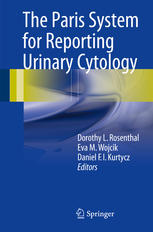

Most ebook files are in PDF format, so you can easily read them using various software such as Foxit Reader or directly on the Google Chrome browser.
Some ebook files are released by publishers in other formats such as .awz, .mobi, .epub, .fb2, etc. You may need to install specific software to read these formats on mobile/PC, such as Calibre.
Please read the tutorial at this link: https://ebookbell.com/faq
We offer FREE conversion to the popular formats you request; however, this may take some time. Therefore, right after payment, please email us, and we will try to provide the service as quickly as possible.
For some exceptional file formats or broken links (if any), please refrain from opening any disputes. Instead, email us first, and we will try to assist within a maximum of 6 hours.
EbookBell Team

4.3
88 reviewsThis book describes a novel and proven approach to cytologically classify urinary samples for the detection of bladder cancer and lesions of the upper urinary tract. The new method is based on the collective experience of knowledgeable cytopathologists who have tested the terminology within their own laboratories for reproducibility and predictability of neoplasms of the urinary tract. Accompanying the written criteria for each diagnostic category are meticulously photographed exemplars of the cellular features, with cogently annotated descriptions of the photographs. The book thereby performs as an atlas for microscopists involved in diagnostic cytopathology at all levels of their education. Included in the targeted readership are experienced pathologists, cytotechnologists, and students of both professional groups. The new terminology also considers the clinical aspects of patient management.
Written by experts in the field who convened at the 18th International Congress of Cytology in Paris, The Paris System for Reporting Urinary Cytology presents a global standard for reporting and a new philosophic approach that maximizes the strengths of detecting the potentially lethal high grade lesions by urinary cytology, and recognizes without apology the inability to reliably detect the low grade lesions in urinary cytology.
The Concept has been endorsed by the American Society Of Cytopathology, and the International Academy of Cytology.